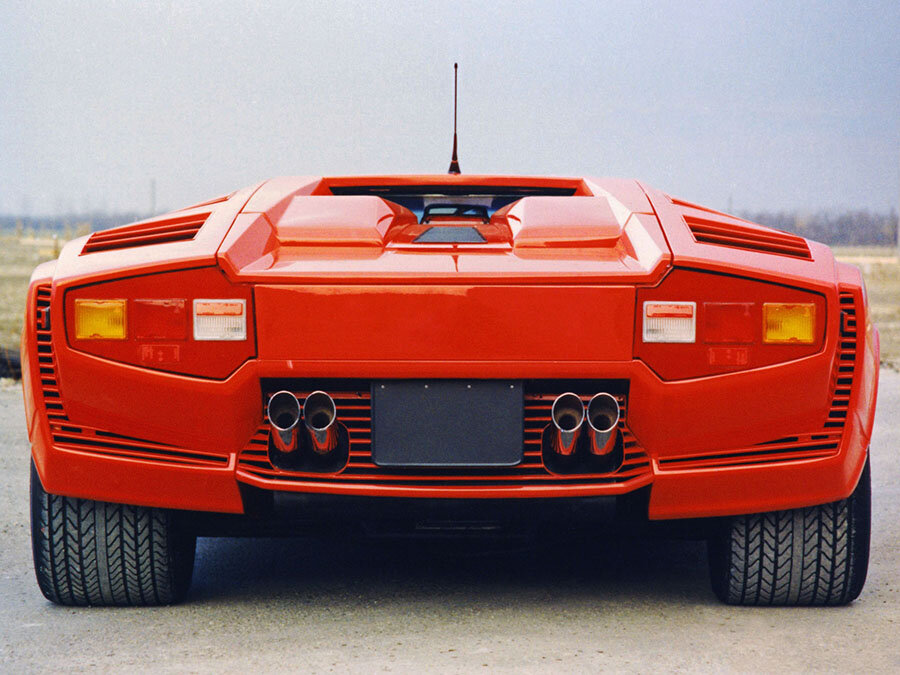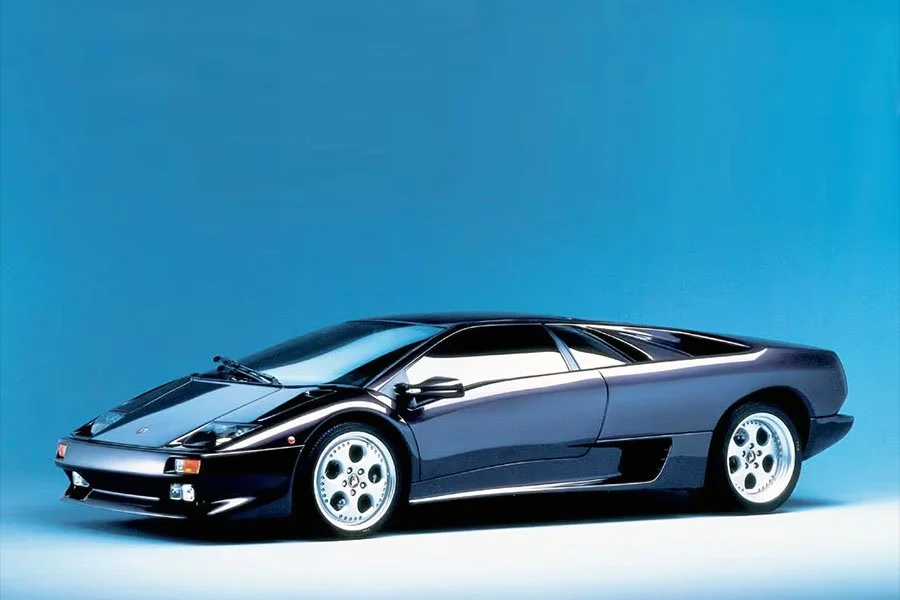Guide: Aero Speciale - a Historical & Technical Appraisal of the Lamborghini Countach L150
/BACKGROUND
Immediately after the Mimram Group's takeover of Automobili Lamborghini was approved by the Italian authorities in late 1980, the green light was given to create a host of new models.
The pretty but commercially unsuccessful V8-powered Silhouette was transformed into the entry level Jalpa.
To replace the existing four-litre engine, a 4.8-litre unit was developed for the new Countach 5000 S.
The Cheetah military all-terrain concept was re-engineered to become the wacky LM 002, which proved a surprise hit.
The Mimram Group was headed by the young Swiss Mimram brothers, Jean-Claude and Patrick.
They had initially been granted permission to manage Automobili Lamborghini on a temporary basis in July 1980; the company was in administration after previous owners, Rene Leimer and Georges-Henri Rossetti, took the firm into bankruptcy.
Once the Countach 5000 S was ready for production, the Mimram’s commissioned a further uprated 5.2-litre engine with four valve cylinder heads. The resultant Countach Quattrovalvole was launched at the Geneva Motor Show in March 1985.
During the Quattrovalvole’s final stages of development, chief engineer, Giulio Alfieri, was asked to create a prototype evolution variant of the Countach platform – something that could be assessed as a potential offering prior to the arrival of an all-new replacement model later in the decade.
Internally dubbed the Restyling Prototype and subsequently as L150, the revamped machine would principally address the existing Countach’s poor drag coefficient. Modernising the styling was also on the agenda.
Alfieri’s team started work in late 1984.
BODYWORK
The machine that emerged in the months that followed had a noticeably softer profile in an attempt to smooth the airflow over and around the car.
Right at the front was a flatter wraparound front apron with integrated fog lights and two brake cooling slats per side.
Deep body coloured side skirts ran the length of the wheelbase.
The large NACA side ducts from the original design, along with the bulbous rear wheelarch flares, were deleted.
The new rear fenders were elaborately styled in a manner less disruptive to the aerodynamic profile. At the leading edge were new active cooling vanes that electronically opened up when more air was required into the side-mounted radiators.
The installation of fully retractable electric side windows was a complex undertaking. They had to be fitted at a slightly more inclined angle then before; Alfieri subsequently took the opportunity to re-profile the sail panel treatment behind the windows. The boxy rectangular air boxes from the original were deleted in favour of flush cooling vanes. Further back, enlarged hot air extraction vents were fitted.
The aforementioned rear fender extensions gave the tail a radically different appearance. They had open back ends to allow high pressure air to escape from the wheel wells. The fender extensions swept under the rear of the car where they joined a new slatted exhaust shroud.
In typical 1980s fashion, all the cooling slats were painted body colour (Rosso).
Instead of an engine cover with a single large power bulge (like the standard Quattrovalvole), the L150 came with a ‘double-bulge’ engine cover and a central bank of cooling vents in between. A broadly similar engine lid was later adopted for Lamborghini’s fuel-injected version of the Countach Quattrovalvole (created principally for the US market).
Like US-market cars of the era, rectangular side marker lights were fitted front and back.
Perhaps significantly, there were no Countach badges anywhere on the car.
CHASSIS
To accommodate the new radiator and oil cooler layouts, the standard Countach chassis had to be slightly modified.
Otherwise, the rest of the underpinnings were unchanged.
The round tubed spaceframe had a floorpan that was a mixture of fibreglass and steel. Fuel tanks with a combined capacity of 120-litres were housed in each sill.
Suspension was independent all round. It comprised double wishbones at the front with upper lateral links, reversed lower wishbones and upper and lower trailing arms at the back. Coil springs and telescopic Koni dampers were installed at each corner (two per side at the rear). Anti-roll bars were fitted at either end.
Brake discs and calipers were supplied by ATE. The discs had a 300mm diameter at the front and 284mm diameter at the rear.
15-inch diameter wheels measured 7.5 and 9.5-inches wide front to back. They were manufactured by OZ Racing and shod with Pirelli P7 tyres.
ENGINE / TRANSMISSION
In the engine bay was the Tipo LP112 D version of the all-alloy DOHC Lamborghini V12 that had been around in one shape or another since 1963.
Compared to the outgoing 5000 S, the Quattrovalvole engine was 413cc larger. An overall capacity of 5167cc was achieved by extending the stroke by 6mm to 75mm. Bore was kept at 85.5mm.
Four valve cylinder heads with pentagonal combustion chambers were fitted. The Quattrovalvole heads featured two 36mm inlet valves and two 32mm exhaust valves for each cylinder. Previously, the 5000 S engine had used single 48mm and 38.2mm valves respectively.
The addition of a four-valve head had been considered a more attractive proposition than the alternatives of further increased displacement or turbocharging.
The compression ratio was 9.5:1.
The Quattrovalvole engine also ushered in downdraught instead of sidedraught carburettors; six Weber 44 DCNFs replaced the 45 DCOEs used on the 5000 S.
Magnetti Marelli electronic ignition was fitted.
Peak output was 455bhp at 7000rpm and 369lb-ft at 5200rpm.
Transmission was via Lamborghini’s five-speed manual gearbox, a beefier clutch and a limited-slip differential.
INTERIOR
The L150’s interior was lifted from a standard Countach of the period. It was configured with beige upholstery and a dark brown upper dash.
Housed directly behind the three-spoke leather-rimmed steering wheel in a rectangular binnacle was a large speedometer and rev counter with a smaller oil pressure gauge in between. Off to the left were more small gauges for oil temperature and battery amps. To the right were read outs for water temperature and fuel.
The audio system was located next to the glovebox. Ventilation controls were mounted on a central console that linked the dash and the bulky transmission tunnel.
Bucket seats could be manually adjusted fore and aft, but the backs were fixed in position.
WEIGHT / PERFORMANCE
At a quoted 1490kg, the L150 weighed the same as standard Countach Quattrovalvole.
Top speed was said to have ‘around 200mph’ (up from the usual 188mph).
The 0-62mph time stayed at 4.8 seconds.
SUBSEQUENT HISTORY
As it transpired, the L150 was never seriously put through its paces because the cost to manufacture a production run of any size was deemed too great. At the time, the Quattrovalvole was proving to be the best-selling Countach ever. In addition, Lamborghini thought starting work on a clean sheet replacement to launch in a few years time was more prudent than taking the L150 concept any further.
In April 1987, ownership of the L150 was transferred to Patrick Mimram, it had covered less than 100 miles. The sale was part of a deal that saw the Mimram Group sell Automobili Lamborghini to Chrysler for $25m. The Mimram Group had paid $3m for the company back in late 1980.
At the height of the late 1980s supercar boom, the L150 was sold again. It changed hands via Achilli Motors in Milan to Auto Palace in Japan for a reputed ¥400m (over $2.5m).
Auto Palace then marketed the car in the red hot Japanese collector car market for ¥1b.
However, soon afterwards the market collapsed. The L150 was later sold for ¥100m to collector, Minoru Miura. It has resided in Miura’s collection ever since.
Text copyright: Supercar Nostalgia
Photo copyright: Lamborghini - https://www.lamborghini.com

































